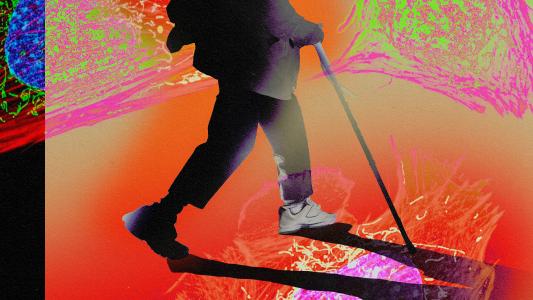Special stem cells have been discovered in the human placenta that could be a straightforward way to repair heart damage after heart attacks. These “super-charged” placental cells were already known to fix damaged heart cells in mice, and trials are being planned to try them in humans.
The challenge: Heart attacks occur when the flow of blood into the heart is blocked, cutting off crucial oxygen. Even if doctors are able to restore the flow, the temporary shortage of blood damages heart cells, leading to the formation of scar tissue.
That scar tissue hinders the heart’s ability to pump, reducing cardiac function, increasing the risk of heart failure, and raising the risk of another heart attack.
Up to 50% of pregnant people who develop a rare heart condition heal the damage on their own.
The idea: Researchers at the Icahn School of Medicine at Mount Sinai believe the key to repairing damaged heart cells may be found in the placenta, the temporary organ that forms in the uterus during pregnancy to deliver nutrients and oxygen to the fetus.
People who are about to or have just given birth can develop a rare condition called “peripartum cardiomyopathy” (PPCM), in which the heart is damaged and can no longer pump blood as well as it should. It isn’t a heart attack, but the results are similar in some ways.
The important discovery here is that up to 50% of those who develop the condition completely recover their heart function and somehow heal the damage. The Mount Sinai team suspected that fetal stem cells in the placenta were responsible for repairing the damaged heart cells.
The researchers discovered that a “super-charged” type of placental stem cell was responsible for the repair in mice.
In 2011, they published a paper proving the connection. By adding fluorescent tags to the stem cells in a pregnant mouse’s placenta, they were able to watch these cells travel to the mouse’s heart, attach to the damaged tissue, and then differentiate into several types of healthy heart cells.
By 2019, the team figured out that placental cells expressing a specific protein, called “Cdx2,” were responsible for the repair in mice. When they injected the cells into the tail veins of male mice, they traveled to their hearts and healed damage caused by heart attacks.
“They almost seem like a super-charged population of stem cells, in that they can target the site of an injury and travel directly to the injury through the circulatory system and are able to avoid rejection by the host immune system,” said principal investigator Hina Chaudhry at the time.
What’s new? By analyzing 106 donated human placentas, Chaudhry’s team has now confirmed that they not only contain Cdx2-expressing placental cells, but that the special cells are abundant in the organ.
In lab tests, the researchers also demonstrated that the placental stem cells can become two types of heart cells — contracting muscle cells and blood vessel cells — and when they created clones of the cells in the lab, the clones retained these abilities.
The special stem cells are abundant in human placentas.
The Cdx2-expressing cells also expressed high levels of genes that help prevent an immune reaction, according to the team’s new research.
While this is likely to help ensure a mother’s immune system tolerates the placenta, Chaudhry told New Scientist it could also help prevent rejection if the cells were used to treat heart damage in someone other than the placenta carrier, like in the male mouse study.
Looking ahead: Chaudhry’s team is now preparing to see if Cdx2-expressing placental cells can repair heart damage in pigs. If so, clinical trials in people could follow, potentially allowing doctors to repair damaged hearts with a simple injection.
Several other approaches are also showing promise for healing after heart attacks, including ones involving microRNA, stem cell-laced patches, and CRISPR gene editing — suggesting that we could soon live in a world where having a heart attack doesn’t mean living with a damaged heart for the rest of your life.
We’d love to hear from you! If you have a comment about this article or if you have a tip for a future Freethink story, please email us at [email protected].






